Debra L. Martin's Blog, page 313
February 17, 2012
Grab a copy of #Fantasy QUEST FOR NOBILITY
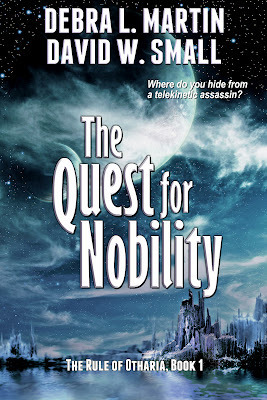
QUEST FOR NOBILITY is FREE on February 17th and 18th. If you're a fan of fantasy, this book may be just what you're looking for. Happy Reading!
Buy link: http://www.amazon.com/Nobility-Fantasy-Adventure-Otharia-ebook/dp/B003CC1KI4
Book blurb:
The parents of royal Otharian twins Darius and Dyla have been murdered; their cousin is stealing their throne, and they are falsely accused of murder. Their only choice is to flee to the forbidden and quarantined planet Earth, but it could turn out to be a one-way trip.
To return home, they must find an ancient crystal, that once belonged to Merlin, to power the return portal. When the twins stumble upon the location of the crystal, the local crime boss sends out his assassin to retrieve it. Can Darius and Dyla use their PSI powers to open the portal home and reclaim their throne before the assassin catches up to them?
Reviewer's comments:
"...this fantasy tale is highly imaginative and quite engaging..." Grace Krispy
."..science fiction/adventure novel has a lot going for it: believable lead characters, a classic coming-of-age narrative, and an interesting mixture of both high-tech science fiction and fantasy elements..." Isabela Morales
"...The end is fantastic when all the threads that run through the tale are uncovered..." Robert J. Duperre
For those who wish to continue reading about the adventures of Darius, Dyla and Eclair, THE CRYSTAL FACADE, the next book in the "Rule of Otharia" series is also available.
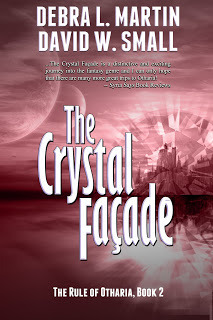
Buy link: http://www.amazon.com/Crystal-Fantasy-Adventure-Otharia-ebook/dp/B003CC1KK2

Published on February 17, 2012 05:00
February 16, 2012
Review: STALKING SHADOWS by Regan Black
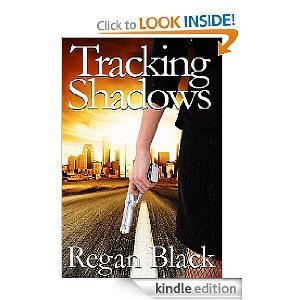
 4 of 5 stars
4 of 5 starsTrina Durham has one thing on her mind: revenge. She's out to kill Slick Micky for the murder of her childhood friend, Joel. She's an assassin with a unique ability to induce hallucinations, both horrifying and wonderful, in those around her and she plans on using it to find the Chicago mob boss.
Slick Micky is the king of smuggling in 2096 Chicago. He deals only in non-lethal contraband like coffee and sugar and delivers always and on time. He's a master of illusion and only a few know his real identity, but someone wants to topple his empire. He has a loyal team that surrounds him and no one has been able to reach him, until now.
Micky' and Trina's worlds are about to collide in this dark urban thriller. The plot moves along quickly as the author peels back the layers surrounding these two people--who they really are and what makes them tick. Intrigue, suspense and a simmering romance makes STALKING SHADOWS an excellent read. Fans of thrillers and romance will definitely want to pick up this title.
Buy link: http://www.amazon.com/Tracking-Shadows-Justice-ebook/dp/B004Z8SAW8

Published on February 16, 2012 05:00
February 15, 2012
New Release: THE MEMORY BOUQUET by Sandra Edwards

Book blurb:
The Memory Bouquet is a trio of short stories featuring the Franklin sisters: Risa, Ginger & Georgia.
In Separate Ways, after Ginger crosses paths with her first love, she discovers just how much she regrets now belonging to someone else.
In Heartbreak Time, eldest sister Risa is coming to terms with the fact that her life is falling apart, and it's happening right before for her daughter's wedding.
In Pieces of April, Georgia—a famous singer who hasn't been home in nearly twenty-five years—reminisces about two critical events from her teenage years that changed her life forever.
The Memory Bouquet is approximately 15,000 words (56 pages) and is an introduction to The Lonely Hearts Club.
Buy link:http://www.amazon.com/The-Memory-Bouquet-ebook/dp/B0073L7D40
Reviewer's Comments:"This is some of Ms. Edwards' best work. The stories are well-written, the dialog is pitch perfect and the characters are well-drawn. I couldn't stop reading." LovesRomance
"Sandra Edwards is at the top of her game with this one and I can't wait for the Lonely Hearts Club to find out what happens with the Franklin Sisters. I highly recommend this quick read to anyone who hasn't fell in love with Sandra Edward's works cause you won't be dissappionted." Nikkye Getride

Published on February 15, 2012 05:00
February 14, 2012
Love Notes by Rebecca Forster
Love Notes: Hitting the Right Onesby Rebecca Forster www.rebeccaforster.com
 It's Valentine's Day once again. Time to express our love, admiration and/or adoration with candy, flowers, and cards in colorful envelopes. It is cards in a colorful envelope that cause me to sweat. Over the course of thirty-five Valentine's Days, I have penned every permutation of 'I Love You' that I can think of to my husband. Sitting with the yearly card in front of me, wishing it was already in the envelope, I was stumped, so I started thinking about the words we choose as authors to express love between our characters.
It's Valentine's Day once again. Time to express our love, admiration and/or adoration with candy, flowers, and cards in colorful envelopes. It is cards in a colorful envelope that cause me to sweat. Over the course of thirty-five Valentine's Days, I have penned every permutation of 'I Love You' that I can think of to my husband. Sitting with the yearly card in front of me, wishing it was already in the envelope, I was stumped, so I started thinking about the words we choose as authors to express love between our characters.To that end, I took my favorite passage from Hostile Witness and analyzed why I found it sexy, deep and real. Every author is different, but here is here is how I believe I hit the right love notes between Josie and Archer in the Witness Series.
HOSTILE WITNESSIntroduction of character's relationship
Josie got out of bed and searched for her clothes. She found her muscle shirt and panties but the sweats and sports bra were missing in action. (It would have been easier to say 'naked', but I liked that she was comfortable without her clothes. This passage felt sexy to me) She shimmied into what she had, glanced at the picture of Lexi, Archer's dead wife, and then went looking for the man they shared. (This note creates an instant characterization of Archer as unafraid of commitment and Josie as a woman who honors his first love) She found him on the rooftop balcony, a perk of owning the building."Morning," Josie walked up behind him and wound her arms around his waist. He was a big man; made her feel downright dainty. She loved the smell of his shirt. Starched and pressed by the man who wore it. (Archer is a guy who can fend for himself, something an independent woman would love. Josie's note about his size making her feel dainty, tells us that she is not a small woman and that she doesn't mind feeling protected.)"Don't move," he commanded. Josie didn't but only because she didn't want to. (Josie chooses to do what her lover asks.) She held her breath, loving the feel of him when he was excited by what he saw through his lens. His gut tightened beneath her hands. A solitary muscle rippled. Quick like a snake. A click. He sighed with satisfaction and stood up slowly, surveying the beach once more before turning around to kiss Josie. (To me, a detail is very telling. Her notice of the one muscle rippling speaks to how familiar Josie is with her lover's body.) She kissed him back just long enough for them both to be happy. (She cares about his needs). When she slipped out of his arms, he let her go. (He understands her.) No nonsense. No jealousy. No neediness. Respect. Affection. Comfort. Chemistry. It was the kind of relationship people who could take care of themselves did well. (Deep love in a nutshell).
Writing love scenes is as challenging as writing sex scenes. Sometimes they are one and the same, sometimes they aren't. The way to create successful, believable relationships between characters is to 'show' their reality and shade a your character's lives with the extra notes that provide a background to the more prominent melody.
The end result of communicating a fabulous fictional relationship should look effortless even though a lot of hard work goes into composing it – just like love in real life.


Published on February 14, 2012 05:00
February 13, 2012
Interview with Brenda K Marshall
Briefly describe your journey in writing your book.
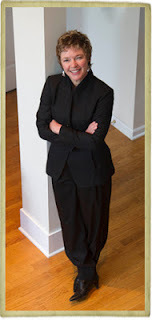 I suspect that most writers, when asked how a book "came to be," necessarily fabricate another fiction. There is no tidy narrative that can accurately sum up the process of writing. There is no clearly defined beginning, no absolute end. Although I did not know it at the time, I began to "write" Dakota, Or What's a Heaven For one day in 1995 while on vacation at Pawley's Island in South Carolina. Browsing through postcards in a tourist shop I came upon a photograph of sixteen young women dressed in their late-nineteenth-century best. That weekend I wrote a short story about those young women.
I suspect that most writers, when asked how a book "came to be," necessarily fabricate another fiction. There is no tidy narrative that can accurately sum up the process of writing. There is no clearly defined beginning, no absolute end. Although I did not know it at the time, I began to "write" Dakota, Or What's a Heaven For one day in 1995 while on vacation at Pawley's Island in South Carolina. Browsing through postcards in a tourist shop I came upon a photograph of sixteen young women dressed in their late-nineteenth-century best. That weekend I wrote a short story about those young women. Putting aside (or so I thought) that short story, I began a novel that was to be set in Dakota Territory in the late-nineteenth century. But it wouldn't take hold. I had the place, the time, the conflicts and themes in mind, but my characters refused to come alive. Another story intervened, one with characters that mattered to me, and for the next five years I worked on that novel. Then, in 2001, I decided to return to my Dakota Territory story. This time, the main character was waiting for me. She was Frances Houghton Bingham, demanding to step out of the postcard and beyond the short story and into a sprawling tale of desire, ambition, and transformation. Dakota was "finished" by 2006. Then it took me another year or two to secure a literary agent, and a couple more years to find a publisher, during which time I revised the novel a couple of times. By the time Dakota was published, I had invested almost a decade in its writing and publishing.
What genre are your books? Do you write in more than one genre?My first novel, Mavis, was described as "contemporary literary fiction with popular appeal." Dakota, Or What's a Heaven For is historical fiction.
What factors influenced your decision to sign with Untreed Reads?
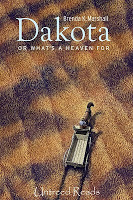 Dakota was originally published (cloth) by a small, nonprofit university press, The North Dakota Institute for Regional Studies. The literary agency that represents my work, Jean V. Naggar Literary Agency, arranged for the e-publishing rights with Untreed Reads.
Dakota was originally published (cloth) by a small, nonprofit university press, The North Dakota Institute for Regional Studies. The literary agency that represents my work, Jean V. Naggar Literary Agency, arranged for the e-publishing rights with Untreed Reads. How involved are you during the creative process for your book's cover design?During the summer of 2009, my partner and two friends and I visited the Stratford Shakespeare Festival in Ontario, Canada. Choosing a downtown café at random, we were pleasantly surprised to find ourselves surrounded by theater posters by the award-winning illustrator and graphic designer, Scott McKowen. A trip to the bookstore across the street to pick up McKowen's A Fine Line: Scratchboard Illustrations (Firefly Books, 2009), had me dreaming of his artwork—sometimes harrowing, sometimes funny, often whimsical, but always gorgeous, always smart—for the cover of Dakota, Or What's a Heaven For. My publisher gave me the go-ahead to contact Scott. He read the manuscript and then we talked about images and ideas. The resulting cover was exquisite. In fact, Scott's illustration for the cover of Dakota was recently selected for the highly competitive New York Society of Illustrators annual exhibition: "Illustrators 54: Book and Editorial." http://www.societyillustrators.org/
What kinds of social media you involved with trying to garner attention for your book(s)?I have a Facebook "fan" page for Dakota, https://www.facebook.com/pages/Dakota-Or-Whats-a-Heaven-For/131561463550563?v=wall&ref=ts, and a website (with blog): www.brendamarshallauthor.com.
There is also a "trailer" for the book up on YouTube: http://www.youtube.com/watch?v=FTJxSP5kleI, with art direction by Scott McKowen, and photography by David Cooper.
How do you feel about the world of digital publishing? Do you think it will replace traditional publishing one day?The best thing about digital publishing is that it makes reading novels more affordable. The hardest thing for me about the changing world of publishing has to do with the disappearance of brick and mortar book stores, although this is the result of a complicated series of phenomena that includes, but goes beyond, digital publishing.
What is the biggest thing you've learned during your journey as an author?I would say that the most important thing that I've learned has to do with patience and diligence and hope, although I have not always been patient, diligent, or hopeful. When I began Dakota, Or What's a Heaven For I could not have imagined that the entire writing and publishing process for this book would take a decade. There were many (many!) days when rejection letters or silence or incomprehensible requests from within the industry made me frustrated with a process that too often leaves the author with the smallest voice in the publishing system. I do not want to trivialize the anxiety or fears that accompany writing and publishing, but I have learned that the antidote is always to keep working, and to work is to hope.
What's next for you?I'm at work on a new novel (but I am superstitious about talking about my work-in-progress in detail).

Buy link: http://store.untreedreads.com/index.php?main_page=product_info&cPath=68_7_114_115&products_id=96

Published on February 13, 2012 05:00
February 11, 2012
FUNDRAISER for the family of Author LC Evans
The world of books lost a special and talented lady to cancer on January 12 of 2012.
Zapstone Productions would like to help out the family of author L.C. Evans by donating 100% of the sales of Discovery - A Far Out Romance, to the Evans family to help defray some of the medical costs.
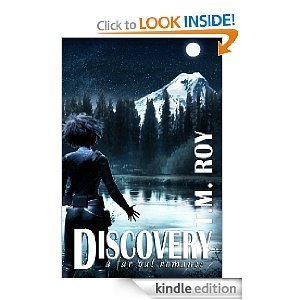
The reason we chose Discovery was for its similarity to LC's last book, "My Planet Or Yours?" which is also an "otherworldly" romantic comedy. The links to Discovery (for Nook and Kindle) as well as other LC Evans books you might enjoy are all listed on this page:
http://www.zapstone.com/evans.html
This is a wonderful gesture so let's all get out there and tweet about and put the link on your Facebook timeline.

Zapstone Productions would like to help out the family of author L.C. Evans by donating 100% of the sales of Discovery - A Far Out Romance, to the Evans family to help defray some of the medical costs.

The reason we chose Discovery was for its similarity to LC's last book, "My Planet Or Yours?" which is also an "otherworldly" romantic comedy. The links to Discovery (for Nook and Kindle) as well as other LC Evans books you might enjoy are all listed on this page:
http://www.zapstone.com/evans.html
This is a wonderful gesture so let's all get out there and tweet about and put the link on your Facebook timeline.

Published on February 11, 2012 05:00
February 10, 2012
Interview with Leta Gail Doerr
Briefly describe your journey in writing your book.
 Journey? Perhaps adventure is a more suitable word! I began working on The Prince at the Corner Bakery in April 2008 when I entered the first ten pages in a writer's contest for unpublished authors. I didn't win, but it was just the boost I needed to keep writing and finish the work. The working title at the time was Happiness Is… and I had NO CLUE where I was going to take it at the time.
Journey? Perhaps adventure is a more suitable word! I began working on The Prince at the Corner Bakery in April 2008 when I entered the first ten pages in a writer's contest for unpublished authors. I didn't win, but it was just the boost I needed to keep writing and finish the work. The working title at the time was Happiness Is… and I had NO CLUE where I was going to take it at the time.
Nearly 300 pages later I completed the novel, had joined our local RWA Chapter and was ready for submission. A writer friend of mine had great experience with a well known small press, so I submitted to them and at first, had a very favorable response. I checked my email every day for several months waiting for a response. (Lesson 1 – Email response time in the publishing world is like something out of a sci-fi novel. I think there's some sort of time continuum, we just haven't figured it out yet).
Anyway, I was extremely fortunate to be assigned to a very talented and articulate editor. She and I went back and forth for months, in the end I was not offered a contract. But the knowledge and experience I gained during this process was enough to propel me forward through the rewrites.
Through a series of events I found Untreed Reads, and essentially, found a home for The Prince at the Corner Bakery. It was a perfect fit. I continue to learn about the industry every day, and if all goes well, I'll keep learning for as long as I stay in this business.
What genre are your books? Do you write in more than one genre?My main focus is writing within the contemporary romance and Women's fiction genre. I have written anywhere from the doors wide open to secured closed, locked and triple checked ;)
If you write in more than one genre, do you use a pen name?My erotic romance titles are published under Kienna Riley.
Did you query agents and traditional publishers? Did you receive an offer of representation or a book contract?Early on in my writing endeavors I queried agents, but that was very brief, as at the time I was so new to the writing world and just didn't know what I was really looking for. I have queried traditional publishers, and have contracts with both Untreed Reads and Cobblestone Press.
What factors influenced your decision to sign with Untreed Reads?I keep a listing of all of the publishers and agents I either queried or may intend to query. While doing researching one day in 2010, I discovered that Jay at Untreed Reads was very active in a discussion board related to the launch of Untreed Reads Publishing. I liked what he had to say, was encouraged by his forward thinking and vision, so I took and chance and queried. Here I am a contract later and I couldn't be happier.
How involved are you during the creative process for your book's cover design?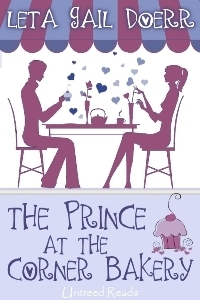 For both Up on the Rooftop (Kienna Riley) and The Prince at the Corner Bakery (Leta Gail Doerr) I was provided with a cover art design form to submit. The form housed typical questions like book setting, lead character traits, images, etc. which provided me with the opportunity to articulate how I envisioned the book cover. In both cases, the cover artists were incredibly talented and well exceeded my expectations. Both covers truly depict the story and lead characters.
For both Up on the Rooftop (Kienna Riley) and The Prince at the Corner Bakery (Leta Gail Doerr) I was provided with a cover art design form to submit. The form housed typical questions like book setting, lead character traits, images, etc. which provided me with the opportunity to articulate how I envisioned the book cover. In both cases, the cover artists were incredibly talented and well exceeded my expectations. Both covers truly depict the story and lead characters.
The print version of The Prince at the Corner Bakery will be released in February, 2012. I have a cover artist who also created my The Literary Blonde logo for branding. She and I work very closely together, and again, she has created an image that is spot on with the message of the novel.
What kinds of social media [twitter, facebook, webpage, blog, writing forums] are you involved with trying to garner attention for your book(s)?I'm on Facebook, Twitter have my own webpage www.theliteraryblonde.com It's a daily struggle to keep up with all of the social media, but I'm out there as much as I can right now given my work and family schedule. I've learned that to succeed in this business you have to be present every day, and keep at it, every day. Self promotion is like exercise, it's tough to get started, but I feel better about it now that it's a routine.
How do you feel about the world of digital publishing? Do you think it will replace traditional publishing one day?I think there will always be a place for traditional publishing. I love my eReader and enjoy the benefits of digital publishing as it's greener, easy to access, cost effective, and selfishly, I can get my hot little hands on the next great read in a matter of seconds. But some days, I long for a solid book, with pages I can thumb through and smell, feel and really enjoy. I just don't see society totally giving up on that notion.
What is the biggest thing you've learned during your journey as an author?I've learned to not beat myself up over rejection. It happens. It's happened before, and it will happen again. I've been fortunate enough to have really stellar editors who took the time to share with me what needed to be improved, so that the next time I went back at them with a fresh submission, I had a better chance because I listened, learned, refined and never gave up.
Do you have any advice for new authors?Writing is work. Self promotion is work. You have to be your own biggest fan first, before you go looking for new ones. The writing industry is full of many generous, kind, giving and caring professionals that I've had the privilege to meet over the past few years. We're all in this together, word for word. So, reach out, make new friends, and join us on this fantastic journey.
What's next for you?I'm working on a series of novellas, all ranging in heat levels from sweet contemporary to sexy erotic romance. Working titles are 52 Ways to Flirt, Year of the Rabbit and Love for Sail.
I've got some book signing coming up this Spring to promo The Prince at the Corner Bakery in both ebook and print form. I hope to meet some new readers there ;)
Contact info: Leta Gail Doerrwww.theliteraryblonde.comTwitter: @Literary BlondeFacebook: The Literary Blonde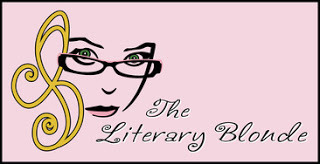


 Journey? Perhaps adventure is a more suitable word! I began working on The Prince at the Corner Bakery in April 2008 when I entered the first ten pages in a writer's contest for unpublished authors. I didn't win, but it was just the boost I needed to keep writing and finish the work. The working title at the time was Happiness Is… and I had NO CLUE where I was going to take it at the time.
Journey? Perhaps adventure is a more suitable word! I began working on The Prince at the Corner Bakery in April 2008 when I entered the first ten pages in a writer's contest for unpublished authors. I didn't win, but it was just the boost I needed to keep writing and finish the work. The working title at the time was Happiness Is… and I had NO CLUE where I was going to take it at the time. Nearly 300 pages later I completed the novel, had joined our local RWA Chapter and was ready for submission. A writer friend of mine had great experience with a well known small press, so I submitted to them and at first, had a very favorable response. I checked my email every day for several months waiting for a response. (Lesson 1 – Email response time in the publishing world is like something out of a sci-fi novel. I think there's some sort of time continuum, we just haven't figured it out yet).
Anyway, I was extremely fortunate to be assigned to a very talented and articulate editor. She and I went back and forth for months, in the end I was not offered a contract. But the knowledge and experience I gained during this process was enough to propel me forward through the rewrites.
Through a series of events I found Untreed Reads, and essentially, found a home for The Prince at the Corner Bakery. It was a perfect fit. I continue to learn about the industry every day, and if all goes well, I'll keep learning for as long as I stay in this business.
What genre are your books? Do you write in more than one genre?My main focus is writing within the contemporary romance and Women's fiction genre. I have written anywhere from the doors wide open to secured closed, locked and triple checked ;)
If you write in more than one genre, do you use a pen name?My erotic romance titles are published under Kienna Riley.
Did you query agents and traditional publishers? Did you receive an offer of representation or a book contract?Early on in my writing endeavors I queried agents, but that was very brief, as at the time I was so new to the writing world and just didn't know what I was really looking for. I have queried traditional publishers, and have contracts with both Untreed Reads and Cobblestone Press.
What factors influenced your decision to sign with Untreed Reads?I keep a listing of all of the publishers and agents I either queried or may intend to query. While doing researching one day in 2010, I discovered that Jay at Untreed Reads was very active in a discussion board related to the launch of Untreed Reads Publishing. I liked what he had to say, was encouraged by his forward thinking and vision, so I took and chance and queried. Here I am a contract later and I couldn't be happier.
How involved are you during the creative process for your book's cover design?
 For both Up on the Rooftop (Kienna Riley) and The Prince at the Corner Bakery (Leta Gail Doerr) I was provided with a cover art design form to submit. The form housed typical questions like book setting, lead character traits, images, etc. which provided me with the opportunity to articulate how I envisioned the book cover. In both cases, the cover artists were incredibly talented and well exceeded my expectations. Both covers truly depict the story and lead characters.
For both Up on the Rooftop (Kienna Riley) and The Prince at the Corner Bakery (Leta Gail Doerr) I was provided with a cover art design form to submit. The form housed typical questions like book setting, lead character traits, images, etc. which provided me with the opportunity to articulate how I envisioned the book cover. In both cases, the cover artists were incredibly talented and well exceeded my expectations. Both covers truly depict the story and lead characters. The print version of The Prince at the Corner Bakery will be released in February, 2012. I have a cover artist who also created my The Literary Blonde logo for branding. She and I work very closely together, and again, she has created an image that is spot on with the message of the novel.
What kinds of social media [twitter, facebook, webpage, blog, writing forums] are you involved with trying to garner attention for your book(s)?I'm on Facebook, Twitter have my own webpage www.theliteraryblonde.com It's a daily struggle to keep up with all of the social media, but I'm out there as much as I can right now given my work and family schedule. I've learned that to succeed in this business you have to be present every day, and keep at it, every day. Self promotion is like exercise, it's tough to get started, but I feel better about it now that it's a routine.
How do you feel about the world of digital publishing? Do you think it will replace traditional publishing one day?I think there will always be a place for traditional publishing. I love my eReader and enjoy the benefits of digital publishing as it's greener, easy to access, cost effective, and selfishly, I can get my hot little hands on the next great read in a matter of seconds. But some days, I long for a solid book, with pages I can thumb through and smell, feel and really enjoy. I just don't see society totally giving up on that notion.
What is the biggest thing you've learned during your journey as an author?I've learned to not beat myself up over rejection. It happens. It's happened before, and it will happen again. I've been fortunate enough to have really stellar editors who took the time to share with me what needed to be improved, so that the next time I went back at them with a fresh submission, I had a better chance because I listened, learned, refined and never gave up.
Do you have any advice for new authors?Writing is work. Self promotion is work. You have to be your own biggest fan first, before you go looking for new ones. The writing industry is full of many generous, kind, giving and caring professionals that I've had the privilege to meet over the past few years. We're all in this together, word for word. So, reach out, make new friends, and join us on this fantastic journey.
What's next for you?I'm working on a series of novellas, all ranging in heat levels from sweet contemporary to sexy erotic romance. Working titles are 52 Ways to Flirt, Year of the Rabbit and Love for Sail.
I've got some book signing coming up this Spring to promo The Prince at the Corner Bakery in both ebook and print form. I hope to meet some new readers there ;)
Contact info: Leta Gail Doerrwww.theliteraryblonde.comTwitter: @Literary BlondeFacebook: The Literary Blonde


Published on February 10, 2012 04:32
February 8, 2012
World of Symbols: Cygnus and Mother Goose
Michelle Snyder: The Symbologistwww.whiteknightstudio.com
http://whiteknightstudio.blogspot.com/
Cygnus and Mother Goose
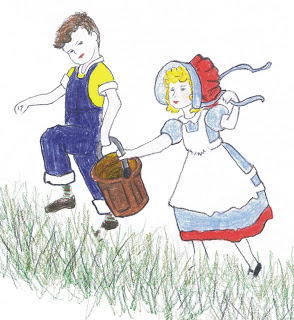
Mythologies, nursery rhymes, legends, and Faerie tales are collections of symbolized events and cultural records preserved by oral tradition, and shared from generation to generation, mostly from mother to child. These stories have become cherished childhood literature, and many have astronomical origins.
Today, when we look up in the sky, we find the Big Dipper, which points us to Polaris, the North Star. Thousands of years ago the star Deneb, in the constellation of Cygnus the Swan, signified north. Images of birds on top of poles, such as the one in Lascaux Cave, represent the earth's axis mundi pointing north toward Cygnus. Mother Goose, the Swan Princess, and other Swan-Mother symbols come from the distant time of Cygnus the Swan.
Mother Goose is associated with children's rhymes, which are classic examples of oral tradition; Hey (or Hi) Diddle Diddle The Cat and The Fiddle carries knowledge of seasonal astronomy, made easy to remember with rhyme and familiar, humorous characters. According to Duncan Enzmann, this rhyme dates back to the bountiful Atlantic years, from c. 5400 BC. It speaks of constellations during harvest season: Canis Minor is played by the cat and fiddle - the cat represents rodent control in the fields, the fiddle is the plow. The dish symbolizes the constellation Eridanus, the spoon being Orion's Arm. The cow represents Venus' horns; the Moon is the growing season. The little dog as Sirius, in Canis Major, "laughs" bountiful: the dish and spoon are so full it is more than we can eat.
Jack and Jill is still recited by young children. Did you ever wonder why they went up the hill? Water flows downhill. C. 6500 BC it was discovered that the dew which collected on the top of the Briton's chalk hills was clean and pure; the chalk filtered the water – just as our charcoal and sand filters do today. Of course, they did not take the water from the very top; that is where the birds perched and left bird-droppings. The little rivulets seeping from the side of the hill provided the best water, cleaned by the chalk hill.
Humpty Dumpty is a more recent poem which carries a story of historic events, most likely of a cannon bequeathed to a king during the English Civil War (1642-49). The King's Men (the army) placed the great, round jade cannon in a church tower for greater range. The enemy destroyed the tower, and the cannon careened to the ground, breaking beyond repair.
Deep in the mists of time we find the origin of Rock-a-bye Baby. This ancient poem was first printed in Mother Goose's Melody in 1765. Duncan-Enzmann has compelling evidence to suggest that its roots are in the Magdalenian culture, ca 10,000 BC. While tending herds of pigs, parents would hang their babies in cradles from the branches of trees, keeping the precious babies safe from predators while they were busy. The trees later become Yggdrasil (the Tree of Life), the link between Above and Below; branches in Heaven, roots firmly in the Earth, and the trunk, the flow of nourishment between. The babies, suspended between roots and branches, are blessed.
Nursery Rhymes are passed on through generations, as mothers rock their babies to sleep. And like fables, legends, mythologies, and faerie tales, they are important purveyors of knowledge, preserved over millennia as children's poems.
Article © 2011 Michelle Snyder, author of Symbology: Decoding Classic Images , and eBooks World of Symbols , and World of Symbols: Secrets of the Mermaids . To find these books, and her symbolism blog, visit www.whiteknightstudio.com.

Cygnus and Mother Goose

Mythologies, nursery rhymes, legends, and Faerie tales are collections of symbolized events and cultural records preserved by oral tradition, and shared from generation to generation, mostly from mother to child. These stories have become cherished childhood literature, and many have astronomical origins.
Today, when we look up in the sky, we find the Big Dipper, which points us to Polaris, the North Star. Thousands of years ago the star Deneb, in the constellation of Cygnus the Swan, signified north. Images of birds on top of poles, such as the one in Lascaux Cave, represent the earth's axis mundi pointing north toward Cygnus. Mother Goose, the Swan Princess, and other Swan-Mother symbols come from the distant time of Cygnus the Swan.
Mother Goose is associated with children's rhymes, which are classic examples of oral tradition; Hey (or Hi) Diddle Diddle The Cat and The Fiddle carries knowledge of seasonal astronomy, made easy to remember with rhyme and familiar, humorous characters. According to Duncan Enzmann, this rhyme dates back to the bountiful Atlantic years, from c. 5400 BC. It speaks of constellations during harvest season: Canis Minor is played by the cat and fiddle - the cat represents rodent control in the fields, the fiddle is the plow. The dish symbolizes the constellation Eridanus, the spoon being Orion's Arm. The cow represents Venus' horns; the Moon is the growing season. The little dog as Sirius, in Canis Major, "laughs" bountiful: the dish and spoon are so full it is more than we can eat.
Jack and Jill is still recited by young children. Did you ever wonder why they went up the hill? Water flows downhill. C. 6500 BC it was discovered that the dew which collected on the top of the Briton's chalk hills was clean and pure; the chalk filtered the water – just as our charcoal and sand filters do today. Of course, they did not take the water from the very top; that is where the birds perched and left bird-droppings. The little rivulets seeping from the side of the hill provided the best water, cleaned by the chalk hill.
Humpty Dumpty is a more recent poem which carries a story of historic events, most likely of a cannon bequeathed to a king during the English Civil War (1642-49). The King's Men (the army) placed the great, round jade cannon in a church tower for greater range. The enemy destroyed the tower, and the cannon careened to the ground, breaking beyond repair.
Deep in the mists of time we find the origin of Rock-a-bye Baby. This ancient poem was first printed in Mother Goose's Melody in 1765. Duncan-Enzmann has compelling evidence to suggest that its roots are in the Magdalenian culture, ca 10,000 BC. While tending herds of pigs, parents would hang their babies in cradles from the branches of trees, keeping the precious babies safe from predators while they were busy. The trees later become Yggdrasil (the Tree of Life), the link between Above and Below; branches in Heaven, roots firmly in the Earth, and the trunk, the flow of nourishment between. The babies, suspended between roots and branches, are blessed.
Nursery Rhymes are passed on through generations, as mothers rock their babies to sleep. And like fables, legends, mythologies, and faerie tales, they are important purveyors of knowledge, preserved over millennia as children's poems.
Article © 2011 Michelle Snyder, author of Symbology: Decoding Classic Images , and eBooks World of Symbols , and World of Symbols: Secrets of the Mermaids . To find these books, and her symbolism blog, visit www.whiteknightstudio.com.

Published on February 08, 2012 05:00
February 6, 2012
Review: RESTORATION by Olaf Olafsson
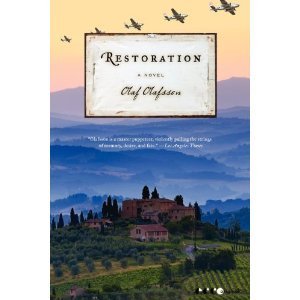
 4 of 5 stars
4 of 5 starsThis is the story of two women, who even though they've never met, their lives will become intricately connected. English ex-patriate Alice shocks her family when she marries an older Italian, Claudio Orsini, and together they buy a rundown villa in Tuscany. While Alice initially immerses herself in the restoration of the villa, surrounding buildings and farmer tenants, it doesn't take long before she misses the British social life in Rome. However, her actions at one of these parties will change the course of her life. She is left dealing with feelings of guilt, heart-breaking loss and ultimately her own survival when the Germans retreat and plunder their way through Tuscany in 1944.
In Rome, we meet Kristin, a Scandinavian fledging artist who interns under Marshall, a renowned restoration artist. She is young and trusting and falls under Marshall's spell, eventually becoming his lover, but the bloom of love soon fades. Kristin plans the perfect revenge against her lover using her own restoration skills, or so she thinks, until events spiral out of control leaving her trying desperately to undo a crime against art itself.
The story follows these two women, told in first person for Alice and third person for Kristin. What do these seemingly random women have in common? It is only when Kristin shows up at Alice's villa seeking sanctuary from the retreating Germans that we begin to learn their darkest secrets and how their lives intersect. While both women suffer in the war, I found that I was much more invested in Kristin's story. The character of Alice seemed flat to me and I found the constant shifting of POVs to be confusing at times. It took a few paragraphs to realize that I was once again in Alice's head.
The author is at his best with a final chapter that shines when all the pieces of their lives fall into place. Fans of literary fiction will definitely enjoy this book.

Published on February 06, 2012 05:00
February 3, 2012
Grammar Girls Top 10 Language Myths
 10. A run-on sentence is a really long sentence. Wrong! They can actually be quite short. In a run-on sentence, independent clauses are squished together without the help of punctuation or a conjunction. If you write "I am short he is tall," as one sentence without a semicolon, colon, or dash between the two independent clauses, it's a run-on sentence even though it only has six words. 9. You shouldn't start a sentence with the word "however." Wrong! It's fine to start a sentence with "however" so long as you use a comma after it when it means "nevertheless." 8. "Irregardless" is not a word. Wrong! "Irregardless" is a bad word and a word you shouldn't use, but it is a word. "Floogetyflop" isn't a word—I just made it up and you have no idea what it means. "Irregardless," on the other hand, is in almost every dictionary labeled as nonstandard. You shouldn't use it if you want to be taken seriously, but it has gained wide enough use to qualify as a word. Almost everyone believes at least one of these myths.7. There is only one way to write the possessive form of a word that ends in "s."Wrong! It's a style choice. For example, in the phrase "Kansas's statute," you can put just an apostrophe at the end of "Kansas" or you can put an apostrophe "s" at the end of "Kansas." Both ways are acceptable. 6. Passive voice is always wrong. Wrong! Passive voice is when you don't name the person who's responsible for the action. An example is the sentence "Mistakes were made," because it doesn't say who made the mistakes. If you don't know who is responsible for an action, passive voice can be the best choice. 5. "I.e." and "e.g." mean the same thing. Wrong! "E.g." means "for example," and "i.e." means roughly "in other words." You use "e.g." to provide a list of incomplete examples, and you use "i.e." to provide a complete clarifying list or statement. 4. You use "a" before words that start with consonants and "an" before words that start with vowels. Wrong! You use "a" before words that start with consonant sounds and "an" before words that start with vowel sounds. So, you'd write that someone has an MBA instead of a MBA, because even though "MBA" starts with "m," which is a consonant, it starts with the sound of the vowel "e"--MBA. 3. It's incorrect to answer the question "How are you?" with the statement "I'm good." Wrong! "Am" is a linking verb and linking verbs should be modified by adjectives such as "good." Because "well" can also act as an adjective, it's also fine to answer "I'm well," but some grammarians believe "I'm well" should be used to talk about your health and not your general disposition. 2. You shouldn't split infinitives. Wrong! Nearly all grammarians want to boldly tell you it's OK to split infinitives. An infinitive is a two-word form of a verb. An example is "to tell." In a split infinitive, another word separates the two parts of the verb. "To boldly tell" is a split infinitive because "boldly" separates "to" from "tell." 1. You shouldn't end a sentence with a preposition. Wrong! You shouldn't end a sentence with a preposition when the sentence would mean the same thing if you left off the preposition. That means "Where are you at?" is wrong because "Where are you?" means the same thing. But there are many sentences where the final preposition is part of a phrasal verb or is necessary to keep from making stuffy, stilted sentences: "I'm going to throw up," "Let's kiss and make up," and "What are you waiting for" are just a few examples.
10. A run-on sentence is a really long sentence. Wrong! They can actually be quite short. In a run-on sentence, independent clauses are squished together without the help of punctuation or a conjunction. If you write "I am short he is tall," as one sentence without a semicolon, colon, or dash between the two independent clauses, it's a run-on sentence even though it only has six words. 9. You shouldn't start a sentence with the word "however." Wrong! It's fine to start a sentence with "however" so long as you use a comma after it when it means "nevertheless." 8. "Irregardless" is not a word. Wrong! "Irregardless" is a bad word and a word you shouldn't use, but it is a word. "Floogetyflop" isn't a word—I just made it up and you have no idea what it means. "Irregardless," on the other hand, is in almost every dictionary labeled as nonstandard. You shouldn't use it if you want to be taken seriously, but it has gained wide enough use to qualify as a word. Almost everyone believes at least one of these myths.7. There is only one way to write the possessive form of a word that ends in "s."Wrong! It's a style choice. For example, in the phrase "Kansas's statute," you can put just an apostrophe at the end of "Kansas" or you can put an apostrophe "s" at the end of "Kansas." Both ways are acceptable. 6. Passive voice is always wrong. Wrong! Passive voice is when you don't name the person who's responsible for the action. An example is the sentence "Mistakes were made," because it doesn't say who made the mistakes. If you don't know who is responsible for an action, passive voice can be the best choice. 5. "I.e." and "e.g." mean the same thing. Wrong! "E.g." means "for example," and "i.e." means roughly "in other words." You use "e.g." to provide a list of incomplete examples, and you use "i.e." to provide a complete clarifying list or statement. 4. You use "a" before words that start with consonants and "an" before words that start with vowels. Wrong! You use "a" before words that start with consonant sounds and "an" before words that start with vowel sounds. So, you'd write that someone has an MBA instead of a MBA, because even though "MBA" starts with "m," which is a consonant, it starts with the sound of the vowel "e"--MBA. 3. It's incorrect to answer the question "How are you?" with the statement "I'm good." Wrong! "Am" is a linking verb and linking verbs should be modified by adjectives such as "good." Because "well" can also act as an adjective, it's also fine to answer "I'm well," but some grammarians believe "I'm well" should be used to talk about your health and not your general disposition. 2. You shouldn't split infinitives. Wrong! Nearly all grammarians want to boldly tell you it's OK to split infinitives. An infinitive is a two-word form of a verb. An example is "to tell." In a split infinitive, another word separates the two parts of the verb. "To boldly tell" is a split infinitive because "boldly" separates "to" from "tell." 1. You shouldn't end a sentence with a preposition. Wrong! You shouldn't end a sentence with a preposition when the sentence would mean the same thing if you left off the preposition. That means "Where are you at?" is wrong because "Where are you?" means the same thing. But there are many sentences where the final preposition is part of a phrasal verb or is necessary to keep from making stuffy, stilted sentences: "I'm going to throw up," "Let's kiss and make up," and "What are you waiting for" are just a few examples.Link: http://grammar.quickanddirtytips.com/top-ten-grammar-myths.aspx

Published on February 03, 2012 05:00



